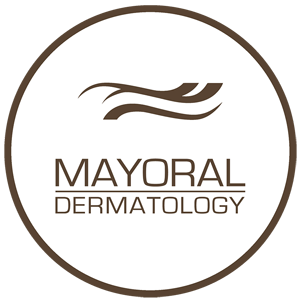Although a small mole dotting the corner of a woman’s mouth is often referred to as a “beauty mark”, moles are sometimes anything but attractive, especially when change from being harmlessly pretty to dangerously ugly. Rare is it to find anyone who doesn’t have at least one mole on their body somewhere and unfortunately, it is becoming rarer today to find someone who hasn’t experienced some form of skin cancer that originated with the development of an abnormal mole.
Moles are essentially a cluster of melanocytes that adhere together instead of spreading over the skin. Melanocytes are cells responsible for the color of your skin and contain the pigment called melanin that determines the lightness or darkness of your skin tone. Normally, these pigmented skin cells don’t clump together but research into why some people have more moles than others seems to indicate a genetic proponent exists to being predisposed for mole development.
Only about one percent of the population are born with moles that are called “congenital nevi”. Cancer experts are gathering evidence from longitudinal studies that indicate people born with a mole or moles may be more at risk for experiencing melanoma than those who are not born with moles. Just like children and adults, infants can have moles anywhere on the body, even between the toes, on the palms and on the scalp.
Why Do Moles Become Cancerous?
When ultraviolet radiation from the sun (and tanning beds) consistently penetrate moles over extended periods, damage to the DNA of melanocytes is initiated which affects how genetic material divides and grows. Moles become cancerous when the corruption of genes encourages rapid-fire cell division resulting from the inability of melanin to absorb all the UV rays targeting the mole. However, not all moles become cancerous from sun exposure. Research has found that skin cancer rates tend to be lower in people who have medium to dark skin tones simply because they have more melanin in their skin.
10 Reasons Why You Should Have Your Moles Checked Regularly by a Dermatologist
#1. By seeing a dermatologist every six months to have your moles inspected for abnormalities, you and your doctor will know where each mole is located on your body, which facilitates monitoring of moles that may be exhibiting atypical changes. During an examination, you may even discover a mole you never knew you had!
#2. Discovering atypical moles (dysplastic nevus) in their early stages of changing from a “normal” mole to a possibly precancerous mole is another reason for undergoing regular skin examinations. Atypical moles differ from normal moles in regards to color, border and surface characteristics. While normal moles are one color, fairly round and smooth, a dysplastic nevus exhibits various shades of brown, black or pink, feel slightly rough or scaly and is asymmetrical in shape. Edges of an atypical mole usually don’t protrude; instead, they tend to fade into the skin surrounding the mole.
#3. Having a professional doctor inspect moles means that even the most subtle signs of a mole changing its cellular composition won’t go undetected. What appears to be an insignificant change in a mole may indicate something significant is happening to the mole to a dermatologist.
#4. Skin-colored or pinkish moles that feel scaly or bumpy may be mistaken for a wart by a lay person. Not all moles are dark brown or black and a mole that feels dry, flaky and itches is not acting like a normal mole
#5. Even if your moles are normal, some may be located in areas of your body that are rubbed by clothing or skin. Instead of experiencing irritation from inconveniently placed moles, have your dermatologist remove the moles in the office by freezing or shaving it away. NEVER remove a mole at home using a knife, scissors or other sharp instrument. Excessive bleeding, scarring and regrowth of the mole may occur. In addition, that mole you cut off may contain precancerous melanocytes. Also, those home remedies you have heard about that are supposed to eliminate moles do not work!
When you visit Mayoral Dermatology for a professional mole examination, try not to wear cosmetics that may conceal smaller moles or discolorations that could be medically significant. Additionally, avoid covering finger or toenails with nail polish since it is possible to have melanoma underneath the nails. If applicable, list all of the medications you are currently taking and don’t neglect to tell your dermatologist about any unusual mole growth, color changes to moles or new moles that have emerged on your skin.
When caught in time, nearly all precancerous and cancerous moles are treatable by implementing any one of a variety of mole and melanoma removal methods provided by the caring and experienced specialists at Mayoral Dermatology.

